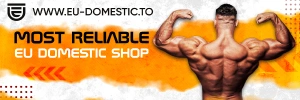Group 1A (Anterior upper leg group) (I ran out of time but this muscle has a lot of info)
Sartorius

Sartorius
Origin = It arises by tendinous fibers from the anterior superior iliac spine and the upper half of the notch below it.
It passes obliquely across the upper and anterior part of the thigh, from the lateral to the medial side of the limb.
Insertion = Anterior Medial Condyle in front of the Gracilis and Semitendinous.
Action = This muscle’s action is very minimal compared to most in the body, but is a very important muscle in hurdling. It assists in crossing the legs at the knee, by flexion of the knee, abduction, and flexion and lateral rotation of the hip. Acts to flex and stabilize the hip joint.
Name Derivative = Latin for Sartorial which means to do with tailoring. This is considered the tailor’s muscle the one that assists you to cross your legs Indian style. It is the position a tailor used to sit in. Side history: Many people who had Tailor as their name, used the name Sartorius because it sounded more admirable.
Nerve Supply = Femoral Nerve
Strengthening/Stretching = Try standing up using the cable machine and putting the straps around your ankles and do hip abduction. The Sartorius muscle is in a more active state standing then in the abductor machines. When you use the machines your hip flexors are overly contracted, this is why so many people with desk jobs complain about lower back pain, because their hip flexors are always tight from sitting all day. If your hip flexors are overly contracted to begin with then the machines are not going to be all that useful (like they would be if you were standing). Standing you are placing a stretch back into the muscle so you will assist it in not only going back to normal tonus, but also you will be working it into a stretch and may alleviate some low back pain.
Note = There are many variations in the muscle to include some people don’t even have one!! It is also the longest muscle in the body.
Sartorius

Sartorius
Origin = It arises by tendinous fibers from the anterior superior iliac spine and the upper half of the notch below it.
It passes obliquely across the upper and anterior part of the thigh, from the lateral to the medial side of the limb.
Insertion = Anterior Medial Condyle in front of the Gracilis and Semitendinous.
Action = This muscle’s action is very minimal compared to most in the body, but is a very important muscle in hurdling. It assists in crossing the legs at the knee, by flexion of the knee, abduction, and flexion and lateral rotation of the hip. Acts to flex and stabilize the hip joint.
Name Derivative = Latin for Sartorial which means to do with tailoring. This is considered the tailor’s muscle the one that assists you to cross your legs Indian style. It is the position a tailor used to sit in. Side history: Many people who had Tailor as their name, used the name Sartorius because it sounded more admirable.
Nerve Supply = Femoral Nerve
Strengthening/Stretching = Try standing up using the cable machine and putting the straps around your ankles and do hip abduction. The Sartorius muscle is in a more active state standing then in the abductor machines. When you use the machines your hip flexors are overly contracted, this is why so many people with desk jobs complain about lower back pain, because their hip flexors are always tight from sitting all day. If your hip flexors are overly contracted to begin with then the machines are not going to be all that useful (like they would be if you were standing). Standing you are placing a stretch back into the muscle so you will assist it in not only going back to normal tonus, but also you will be working it into a stretch and may alleviate some low back pain.
Note = There are many variations in the muscle to include some people don’t even have one!! It is also the longest muscle in the body.


 Please Scroll Down to See Forums Below
Please Scroll Down to See Forums Below 























